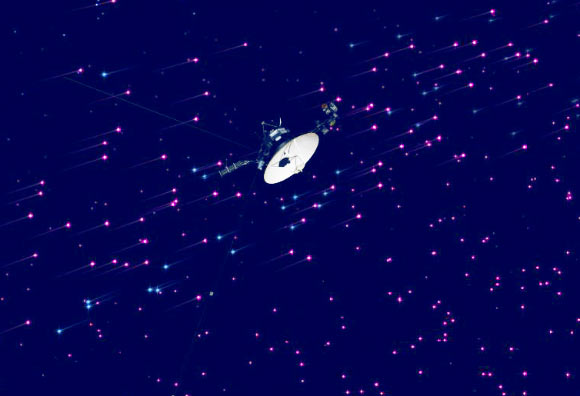Voyager 1 spacecraft has been hit by a ‘shock wave’ from the Sun as it travels through interstellar space, according to NASA scientists.

Voyager 1. Image credit: NASA.
Our Sun goes through periods of increased activity, where it explosively ejects material from its surface, flinging it outward. These events, called coronal mass ejections, generate shock waves.
Three such waves have reached Voyager 1 since it entered interstellar space in 2012.
The first was too small to be noticed when it occurred and was only discovered later, but in March 2013 the second was clearly registered by the cosmic ray instrument onboard Voyager 1.
NASA scientists detected a third wave from the Sun in March 2014.
“Normally, interstellar space is like a quiet lake, but when our Sun has a burst, it sends a shock wave outward that reaches Voyager about a year later. The wave causes the plasma surrounding the spacecraft to sing,” said Dr Ed Stone from the California Institute of Technology in Pasadena, California.
Data from the newest wave generated by our Sun confirm that Voyager 1 is in interstellar space.
“All is not quiet around Voyager. We are excited to analyze these new data. So far, we can say that it confirms we are in interstellar space,” said Dr Don Gurnett of the University of Iowa, who is the principal investigator of the plasma wave instrument on Voyager 1.
Voyager 1 and its twin, Voyager 2, were launched in 1977. Both spacecraft flew by Jupiter and Saturn. Voyager 2 also flew by Uranus and Neptune.
Voyager 2 is the longest continuously operated spacecraft and is expected to enter interstellar space in a few years.







